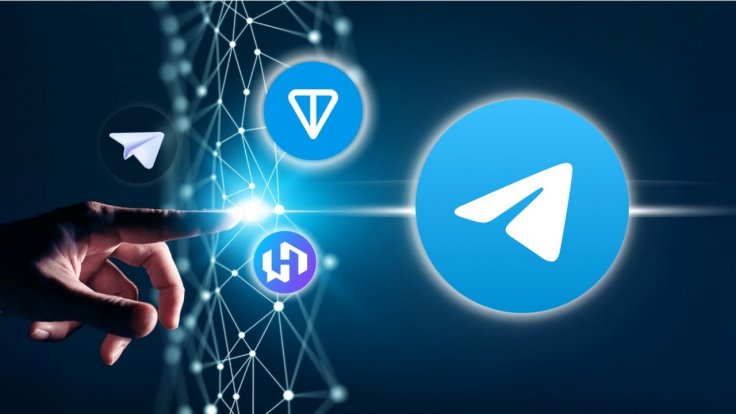
With nearly one billion active users, Telegram is a powerhouse of communication and community. Its user base spans the globe, bringing together people with shared interests across cultures, industries, and digital spaces. Recently, a promising partnership with the TON blockchain (The Open Network) has opened new doors, positioning Telegram as a potential frontrunner in mainstream Web3 adoption. This integration could pave the way for a new era where decentralized apps (dApps) and blockchain capabilities sit comfortably alongside familiar group chats. For Telegram groups, this development could transform engagement, enabling them to become data-driven, monetizable hubs that foster both community interaction and financial growth.
However, the road to this vision is not without its challenges. Currently, most Telegram groups lack the tools and insights needed to scale effectively. Admins are often left guessing about group dynamics, engagement levels, and member needs. From a Web3 perspective, they also lack visibility into critical metrics such as token holdings, group buying power, and transaction activities like token swaps and transfers. Without targeted data, it's nearly impossible to maximize group potential. Moreover, the presence of spam bots and fake users detracts from authentic engagement, lowering the quality of interactions and community trust. The combination of these factors prevents groups from realizing their full potential and exploring the possibilities of Web3.
TON's Role in Transforming the Mini-App Market
TON's partnership with Telegram is a game changer, especially when it comes to the Mini-App market within the platform. Much like WeChat's Mini Programs in China, TON aims to integrate decentralized applications (dApps) and blockchain functionality into the everyday experience of Telegram users, providing new avenues for engagement and monetization directly within the app.
At the core of this strategy is TON Space, a Web3 wallet directly within Telegram. TON Space enables users to store, send, and interact with cryptocurrency, offering an entry point to decentralized finance (DeFi) without needing separate apps. This approach allows users to explore crypto rewards, staking, and trading with just a few taps in the familiar Telegram interface.
By embedding Web3 capabilities, TON gives Telegram a unique advantage as a low-barrier entry into blockchain. This user-friendly ecosystem includes Mini-Apps for Tap-to-Earn games, DeFi services, and real-world applications, opening new paths for user engagement. This type of in-app access could make Telegram a mainstream portal into Web3, leveraging its massive audience to drive adoption.
Opportunities for Mass Web3 Adoption
At the core of TON's strategy is the ambition to onboard 500 million users into Web3 by 2028. With Telegram's vast user base, this vision doesn't seem far-fetched. By embedding Web3 capabilities directly into the platform, TON is positioning itself to tap into a user base that is already comfortable with the messaging app but might be new to blockchain technology.
For users, this integration brings a low-barrier entry into Web3. They don't need to necessarily understand the intricacies of blockchain to participate in the ecosystem. With just a few taps, they can explore crypto rewards, decentralized finance, and digital asset ownership—all within the app they already use daily.
However, despite this potential, the path to mass adoption faces several hurdles. Telegram groups are already a popular way for users to connect and build communities, but without the right tools, many of these groups are unable to fully capitalize on the opportunities presented by Web3. For the millions of groups on Telegram, there needs to be a greater focus on providing tools that help them grow, engage, and monetize their user base. Addressing these issues will be essential for them to evolve into Web3-ready spaces where users feel engaged and valued.
Closing the Gap with Data-Driven Tools
To truly thrive within Web3, Telegram groups need data-driven tools that allow admins to understand member activity, tailor content, and effectively monetize. Tools like TON Space can support Web3 interactions, but full potential requires advanced analytics and control over group access. Imagine a group with 5,000 members where the admin can view engagement levels, track token holdings, and segment users by purchasing power. This would allow admins to design targeted offers, introduce token-gated content, or offer premium rewards for top members.
In this landscape, solutions like Hubz play a critical role. Hubz provides data analytics and token-gating tools, bringing Telegram groups on-chain and transforming them into data-driven, revenue-generating ecosystems. By equipping admins with tools that reveal member insights and enable secure token-based access, Hubz empowers Telegram groups to become thriving, self-sustaining communities. Admins could finally leverage insights to create tailored content, reward loyal members, and drive financial growth.
The Future of Telegram Groups
The partnership between Telegram and TON marks an exciting moment for both Web3 and messaging platforms. However, the success of this vision relies heavily on the development and adoption of intuitive, data-driven tools that help group admins take control of their communities in meaningful ways.
By addressing the current challenges—such as the lack of insights, spam bots, and ineffective monetization strategies— the potential to bring millions of new users into the Web3 ecosystem is there. With the right tools, Telegram groups could become dynamic, monetizable, and sustainable communities, bringing the benefits of Web3 to a global audience.
For group admins looking to prepare for this shift, exploring Web3 tools like those offered by Hubz can be a valuable step in transforming their groups into empowered, engaging, and financially rewarding spaces, setting a new standard for Telegram chats in the Web3 era.








